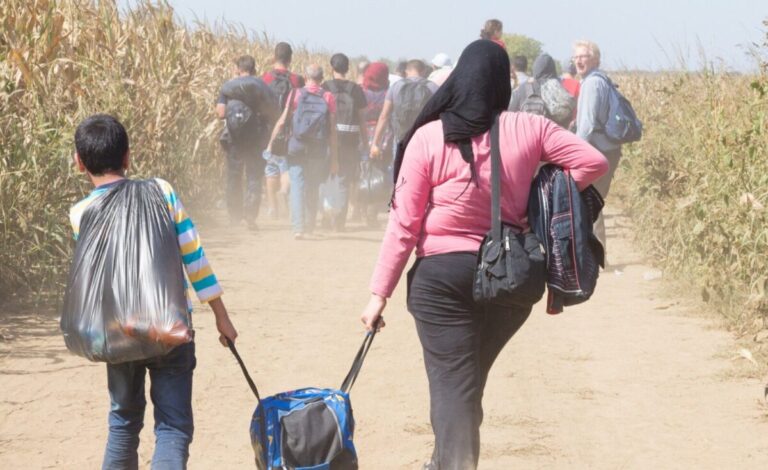
EXCLUSIVE: The number of migrants Austria wanted to return to Romania and how many Bucharest accepted in 2023 under eu rules / Major difference compared to the numbers circulated by Vienna in 2022
Last year, Austria sent requests to Romania for the transfer of 1,929 migrants, whom Vienna claims should be managed by the Romanian authorities. Out of the total requests, Romania accepted 1,724 individuals, according to official data provided to G4Media by the General Inspectorate for Immigration. These are migrants who, before applying for asylum in Austria, passed through Romania, which is thus responsible for them.
Urmărește cele mai noi producții video G4Media
- articolul continuă mai jos -
Of the total of 1,724 individuals, Austria has already organized transfers to Romania for 215 people, of which the actual transfers for 148 individuals have been completed, according to official data provided to G4Media.
It is reminded that Vienna strongly opposed the Schengen expansion to include Romania and Bulgaria, arguing that the two countries lie on an illegal migration route and do not manage the migratory flow effectively. Austrian officials have publicly spoken about tens of thousands of illegal migrants coming through these two countries. However, the number of official requests sent from Vienna to Romania is under 2,000, as shown by the official data.
„We have over 75,000 unregistered migrants in Austria. And we know that 20,000 illegal migrants have passed through Romania. How do we know this? Thanks to the investigation of the Austrian Police,” said Austrian Chancellor Karl Nehammer in December 2022, justifying the veto against the entry of Romania and Bulgaria into Schengen.
Why is Romania obliged to accept these people? The reason is a decision of the European Union from 2013, known as the „Dublin Regulation,” which all EU member states adhere to. The regulation stipulates that a country is obliged to receive migrants who have passed through its territory and have reached another country where they have applied for asylum.
The General Inspectorate for Immigration states that Austria’s requests are based on two situations:
- when, in member states, a foreigner is fingerprinted, and it is established from the entry of these fingerprints into the Eurodac database that the individual appears in Romania with a HIT category 1 (fingerprinting following an asylum application)
- when, following an asylum application by a foreigner in one of the member states, it is determined, based on evidence and circumstantial proof, that the foreigner holds a residence permit or a visa issued by the Romanian authorities
Context. On December 30, 2023, Austria agreed to partially lift its veto against the Schengen expansion and accepted the accession of Romania and Bulgaria with maritime and air borders. In return, the two member states have assumed a series of obligations related to the acceptance of migrants through the Dublin mechanism and increased border security.
The full response of the General Inspectorate for Immigration:
„In accordance with the provisions of Regulation (EU) 604/2013 (the Dublin III Regulation), in 2023, Austria sent requests for the return/acceptance of 1,929 individuals.
It should be mentioned that, in the vast majority, these requests are transmitted to Romania either when, in the member states, a foreigner is fingerprinted, and it is established from the entry of these fingerprints into the Eurodac database that the individual appears in Romania with a HIT category 1 (fingerprinting following an asylum application), or when, following an asylum application by a foreigner in one of the member states, it is determined, based on evidence and circumstantial proof, that the foreigner holds a residence permit or a visa issued by the Romanian authorities, thus making Romania the responsible member state for analyzing an asylum application in accordance with the Dublin Regulation.
Following the receipt of these requests, both from Austria and other member states, the Romanian authorities verify and analyze each case individually and issue a transfer decision (rejection or acceptance of transfer).
Thus, out of the 1,929 requests for return/acceptance, the Romanian authorities accepted Austria’s requests for 1,724 individuals.
Regarding the transfer, it will be carried out within the terms established by the Dublin Regulation.
Following a decision to accept the transfer, the obligation to organize and carry out the transfers falls on the requesting member states (as is the case with Austria), which inform the Romanian authorities (the requested member state) about the transfer details. Given that Dublin transfers are organized by the requesting member state only after an acceptance decision, it is not possible to plan or estimate the number of people to be transferred over the course of a year.
Austria has organized transfers to Romania for 215 individuals, of which the actual transfers for 148 individuals have been completed according to the provisions of the Dublin Regulation.”

Donează lunar pentru susținerea proiectului G4Media
Donează suma dorită pentru susținerea proiectului G4Media
CONT LEI: RO89RZBR0000060019874867
Deschis la Raiffeisen Bank


